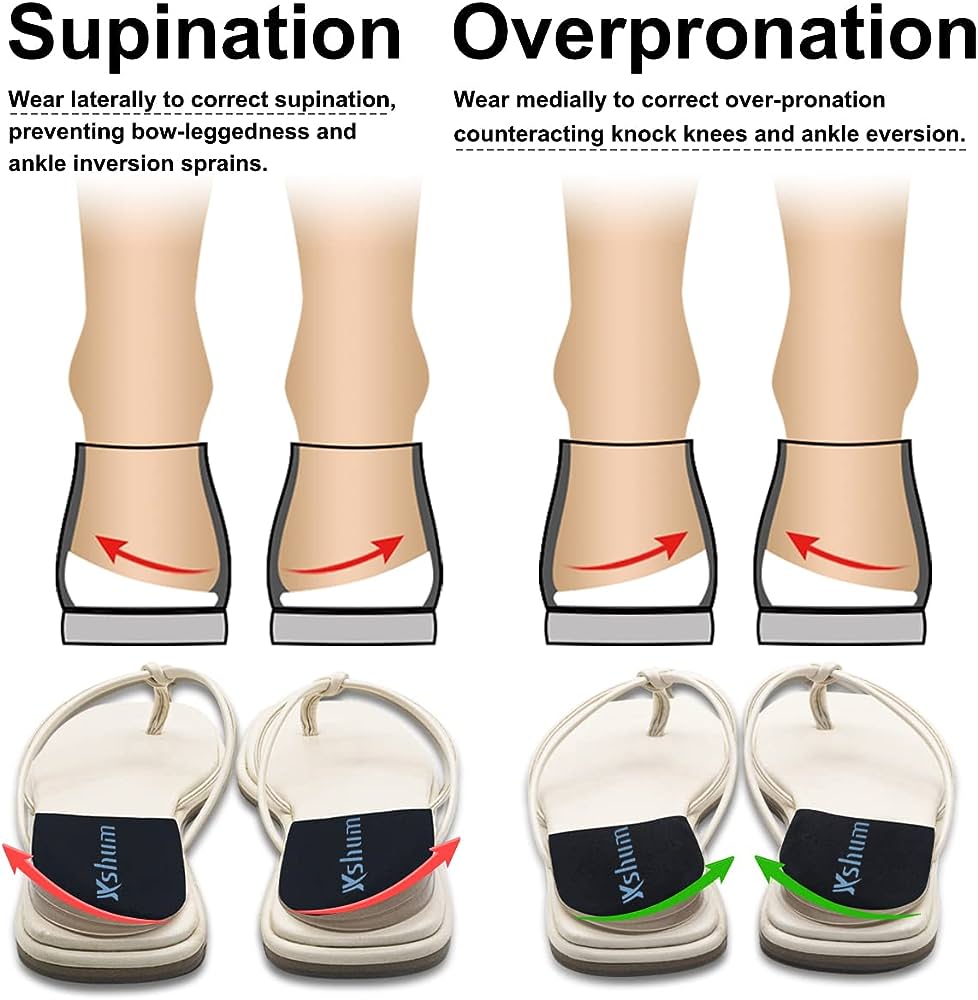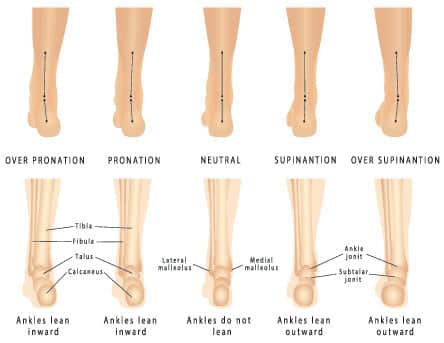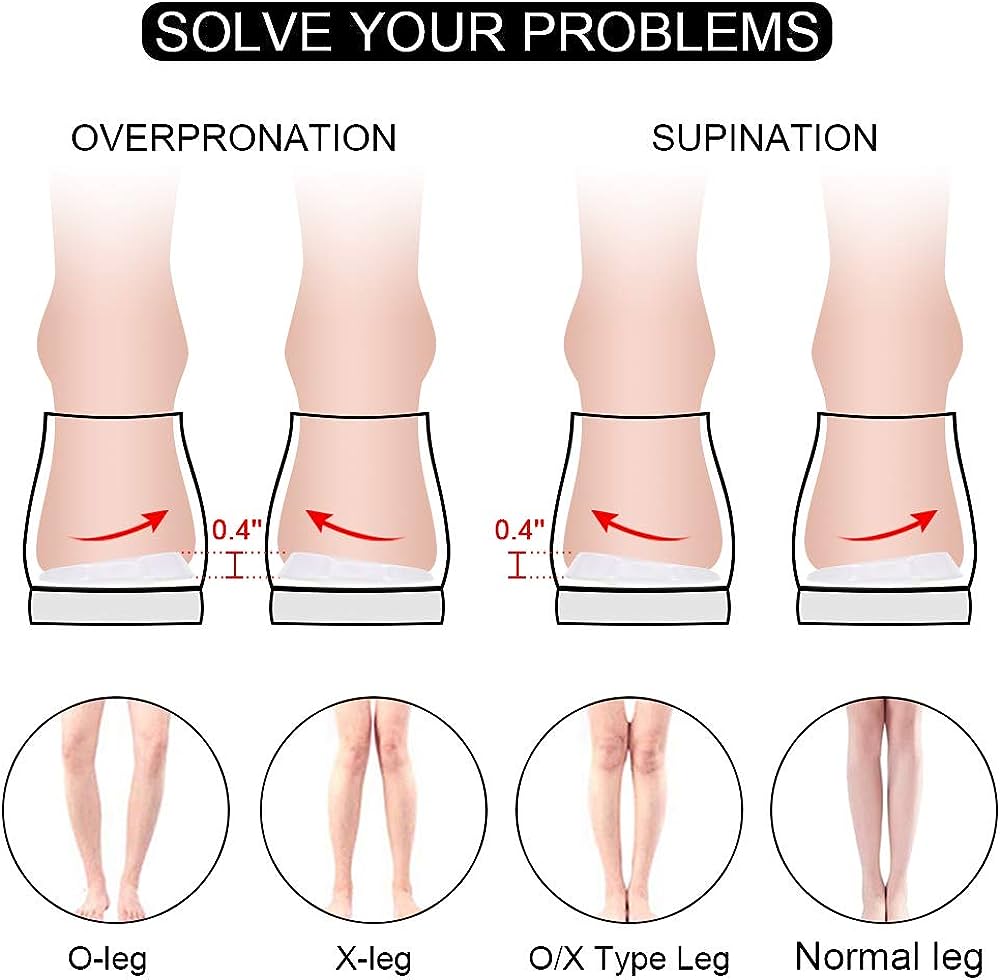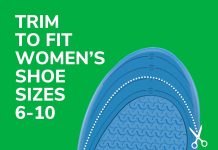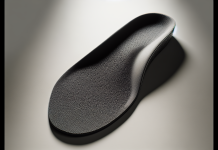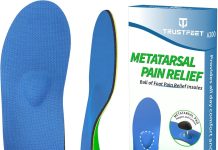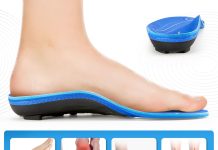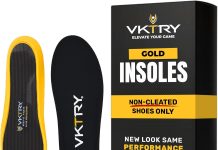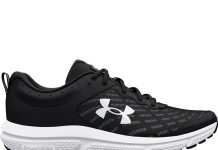If you’ve ever experienced the discomfort of overpronation or supination while walking or running, you may have wondered if there’s a solution to help correct these issues. Well, good news! Insoles can come to the rescue. Designed to provide additional support and stability, they can help align your feet and improve your gait. Whether you’re an athlete looking to enhance your performance or someone seeking relief from foot pain, finding the right insoles may just be the key to correcting overpronation or supination and ensuring a more comfortable and balanced stride. So, let’s explore how these small yet mighty inserts can make a big difference in your step.
This image is property of yoursole.com.
Understanding Overpronation and Supination
Definition of Overpronation
Overpronation is a common foot condition where the feet excessively roll inward while walking or running. This means that the arches of your feet collapse and the ankles turn inward. Overpronation can occur in one or both feet and can lead to various issues if not addressed.
Causes of Overpronation
Several factors can contribute to overpronation. One possible cause is the natural structure and shape of your feet. Flat feet or low arches tend to be more prone to overpronation. Muscle weakness or imbalances in the feet and legs can also contribute to this condition. Another factor is wearing inappropriate footwear, such as shoes that do not provide proper arch support.
Effects of Overpronation
Overpronation can have a significant impact on your foot alignment. When your feet excessively roll inward, it can put stress on the muscles, tendons, and ligaments in your feet and legs. This can lead to various issues including plantar fasciitis, Achilles tendonitis, shin splints, and knee pain. Overpronation can also affect your overall movement and balance, making activities like running or playing sports more challenging.
Definition of Supination
Supination, also known as underpronation or oversupination, is the opposite of overpronation. It occurs when your feet roll outward while walking or running. This causes the weight to be concentrated on the outside of the foot, rather than being evenly distributed. Supination can also lead to various problems if left unaddressed.
Causes of Supination
Like overpronation, supination can be influenced by factors such as foot structure and shape. High arches are often associated with supination. Muscle weaknesses or imbalances in the feet and legs can also contribute to this condition. Wearing improper footwear, particularly those with inadequate cushioning and support, can exacerbate supination.
Effects of Supination
Supination can affect the alignment and stability of your feet. The excessive outward rolling motion can place strain on the muscles and tissues in the feet and legs, leading to issues like ankle sprains, iliotibial band syndrome, and stress fractures. It can also impact your movement and balance, making activities that require agility and stability more challenging.
The Importance of Correcting Overpronation and Supination
Impact on Foot Alignment
Correcting overpronation and supination is essential for maintaining proper foot alignment. By addressing these conditions, you can reduce the stress and strain on the muscles, tendons, and ligaments in your feet and legs. This helps to maintain a more neutral foot position and improves overall biomechanics.
Potential Injuries and Pain
Ignoring overpronation and supination can lead to an increased risk of injuries and chronic pain. The excessive rolling motion can place additional stress on certain areas of the feet and legs, increasing the likelihood of conditions such as plantar fasciitis, Achilles tendonitis, and stress fractures. Correcting these conditions can help prevent such injuries and alleviate pain.
Functional Limitations
Overpronation and supination can have a significant impact on your overall foot function. The abnormal foot motion can affect your ability to walk, run, and engage in various physical activities efficiently. By correcting these conditions, you can improve foot function and enhance your performance in daily activities and sports.
Impact on Movement and Balance
Proper foot alignment is crucial for maintaining optimal movement and balance. Overpronation and supination disrupt the natural biomechanics of walking and running, which can lead to instability and increased risk of falls or accidents. Correcting these conditions can restore proper movement patterns and enhance balance and stability.
Factors Affecting Overpronation and Supination
Foot Structure and Shape
The structure and shape of your feet play a significant role in overpronation and supination. Flat feet or low arches are more prone to overpronation, while high arches are associated with supination. Understanding your foot structure can help determine the appropriate corrective measures, such as choosing the right type of insoles.
Muscle Weakness or Imbalances
Weak or imbalanced muscles in the feet and legs can contribute to overpronation and supination. Strengthening and balancing exercises can help address these issues and improve foot stability and alignment. Working with a physical therapist or a professional who specializes in foot mechanics can provide you with a tailored exercise program.
Improper Footwear
Wearing shoes that do not provide proper arch support and cushioning can exacerbate overpronation and supination. It is essential to choose footwear that fits well and provides adequate stability and shock absorption. Orthotic insoles can be used in conjunction with appropriate footwear to further support the feet and correct the alignment.
Other Underlying Conditions
Certain medical conditions, such as arthritis, diabetes, or structural abnormalities, can contribute to overpronation or supination. It is important to consult with a healthcare professional to identify and address any underlying conditions that may be impacting your foot alignment.
Role of Insoles in Correcting Overpronation and Supination
What Are Insoles?
Insoles, also known as orthotic inserts or shoe inserts, are contoured pads or cushions placed inside shoes to provide additional support and stability to the feet. They are designed to correct foot alignment and address specific issues like overpronation and supination. Insoles can be made of various materials, including foam, gel, or rigid plastic.
Types of Insoles
There are different types of insoles available, each designed to address specific foot conditions. Overpronation-specific insoles are designed to provide additional arch support and help control inward foot rolling. Supination-specific insoles, on the other hand, focus on providing cushioning and support to counter the outward foot rolling motion. It is important to choose the appropriate type based on your specific condition.
Biomechanical Support Provided by Insoles
Insoles work by providing additional support and correcting foot alignment. They help distribute the weight evenly across the feet, reducing stress on specific areas. This allows for more efficient movement and reduces the risk of injuries. Insoles also help stabilize the foot and promote proper foot mechanics during walking or running.
Advantages and Limitations of Insoles
Using insoles can offer several advantages in correcting overpronation and supination. They provide immediate relief and support to the feet, reducing pain and discomfort. Insoles are also non-invasive and can be easily inserted into your existing footwear. However, it is important to note that insoles may not be a standalone solution for severe cases of overpronation or supination. In such instances, a combination of insoles, exercises, and professional assistance may be necessary.
This image is property of Amazon.com.
Choosing the Right Insoles
Seeking Professional Advice
When choosing insoles to correct overpronation or supination, it is advisable to seek professional advice. A podiatrist or orthopedic specialist can assess your foot condition and recommend the appropriate type of insoles based on your specific needs.
Consideration of Footwear
The type of footwear you use in conjunction with insoles is crucial. Look for shoes that provide good arch support, cushioning, and stability. The shoes should have a supportive midsole and a secure fit. It is important to ensure that the insoles fit properly within your chosen footwear.
Determining Arch Type
Understanding your arch type is crucial in selecting the right insoles. An easy way to determine your arch type is through the wet footprint test. Wet your feet and step on a piece of paper or a surface that will show your footprint. If you see a complete footprint with minimal arch or no visible arch, you likely have low or flat arches. If you see only a narrow strip connecting the forefoot and heel, you likely have high arches.
Assessing Foot Shape and Pronation
The shape of your feet and the degree of pronation or supination should be considered when selecting insoles. Some insoles are specifically designed for certain foot shapes or pronation patterns. Assessing these factors will help you choose the most suitable insoles for your condition.
Customized versus Prefabricated Insoles
Customized insoles are specially made for your feet and provide the highest level of customization and support. They are typically recommended for severe cases of overpronation or supination. Prefabricated insoles, on the other hand, are readily available and can be an effective option for mild to moderate cases. They are more affordable and convenient but may not provide the same level of personalized support.
Treating Overpronation and Supination with Insoles
Overpronation-Specific Insoles
Overpronation-specific insoles are designed to address the inward foot rolling motion associated with overpronation. These insoles provide additional arch support and help control excessive pronation. They help to support the arch and distribute weight more evenly across the foot, reducing stress on the muscles and tissues.
Supination-Specific Insoles
Supination-specific insoles, also known as underpronation-specific insoles, focus on addressing the outward rolling motion associated with supination. These insoles provide cushioning and support to counter the impact on the feet. They can help absorb shock and reduce the strain on the outer edges of the feet.
Correctional Techniques Used in Insoles
Insoles designed for overpronation or supination may incorporate various correctional techniques. This can include additional arch support, heel cups, or wedges to promote proper foot alignment. These techniques help redirect the foot motion, correct gait abnormalities, and prevent overpronation or supination.
Additional Features in Corrective Insoles
Some corrective insoles may have additional features to enhance their effectiveness. This can include shock-absorbing capabilities, antimicrobial properties to prevent odor and bacteria build-up, or breathable materials for enhanced comfort. Consider these additional features when choosing the right insoles for your needs.
This image is property of powerstep.com.
Effectiveness of Insoles in Correcting Overpronation and Supination
Scientific Studies and Research
Numerous scientific studies have examined the effectiveness of insoles in correcting overpronation and supination. These studies have shown positive results, indicating that insoles can significantly reduce foot pronation or supination. However, it is important to note that the effectiveness may vary depending on the severity of the condition and individual factors.
User Testimonials
Many individuals who have used insoles to correct overpronation or supination have reported positive outcomes. They have experienced reduced pain, improved foot alignment, and enhanced overall foot function. User testimonials can provide valuable insights into the effectiveness of insoles when considering corrective measures.
Consistency of Results
The consistency of results is an important factor when evaluating the effectiveness of insoles. Consistent positive outcomes across various individuals and studies indicate a higher likelihood of achieving the desired correction of overpronation or supination.
Duration of Usage
The duration for which insoles are used can impact their effectiveness. Consistent and prolonged usage is generally recommended to achieve the desired correction. It is important to follow the specific instructions provided by the manufacturer or healthcare professional and monitor progress over time.
Monitoring Progress
Regular monitoring of progress is crucial when using insoles to correct overpronation or supination. Assessing any changes in foot alignment, pain levels, and overall foot function can help determine the effectiveness of the chosen insoles. If significant progress is not observed, it may be necessary to consult with a professional for further evaluation and adjustment of the treatment plan.
Complementary Measures for Overpronation and Supination
Strength and Stretching Exercises
In addition to using insoles, incorporating strength and stretching exercises can be beneficial in addressing overpronation or supination. These exercises target the muscles in the feet and legs, helping to strengthen them and improve overall foot stability. Examples include toe curls, calf raises, and ankle rotations.
Proper Footwear Selection
Choosing appropriate footwear is a crucial complementary measure in correcting overpronation or supination. Look for shoes that provide good arch support, cushioning, and stability. Opt for a supportive midsole, a secure fit, and proper sizing. Consider consulting with a footwear specialist to ensure you select the right shoes for your foot condition.
Foot and Leg Alignment Corrections
Correcting foot and leg alignment is vital in addressing overpronation or supination. Physical therapy or rehabilitation programs can help identify and correct any misalignments or imbalances. These programs may include exercises, stretches, and techniques to improve foot and leg alignment and promote proper biomechanics.
Physical Therapy or Rehabilitation Programs
When facing severe cases of overpronation or supination, working with a physical therapist or enrolling in a rehabilitation program can provide significant benefits. These professionals can design a tailored program that combines exercises, stretches, and other techniques to correct foot alignment, strengthen muscles, and improve overall foot function.
This image is property of insoles.com.
Prevention and Maintenance Strategies
Maintaining Healthy Footwear Habits
Preventing overpronation or supination starts with maintaining healthy footwear habits. This includes choosing appropriate shoes that provide proper arch support, cushioning, and stability. Regularly replacing worn-out shoes and ensuring a proper fit can help prevent excessive foot motion and correct alignment.
Regular Foot Health Checkups
Regular foot health checkups are important in identifying any early signs of overpronation or supination. A podiatrist or foot specialist can assess your foot structure and alignment, detect any abnormalities, and provide appropriate recommendations or treatment options to prevent further complications.
Foot and Leg Strengthening Exercises
Incorporating foot and leg strengthening exercises into your regular routine helps maintain healthy foot alignment and prevent overpronation or supination. These exercises target the muscles, tendons, and ligaments in the feet and legs, keeping them strong and supportive. Regular exercise also helps improve overall foot and leg function.
Flexibility and Mobility Maintenance
Maintaining flexibility and mobility in the feet and legs can help prevent overpronation and supination. Regular stretching exercises, such as calf stretches and ankle rotations, can improve range of motion and reduce the risk of abnormal foot motion during walking or running.
Replacing Worn-out Insoles
Regularly inspecting and replacing worn-out insoles is crucial in maintaining their effectiveness. Over time, insoles can lose their supportive properties and may no longer provide the necessary correction for overpronation or supination. Replacing worn-out insoles ensures continued support and alignment.
Conclusion
Understanding overpronation and supination is crucial in maintaining proper foot health and functionality. Correcting these conditions through the use of insoles can provide significant benefits, alleviating pain, improving foot alignment, and enhancing overall foot function. Complementary measures such as exercises, proper footwear selection, and regular foot health checkups contribute to a comprehensive approach for preventing, treating, and maintaining healthy foot mechanics. By taking the necessary steps to address overpronation or supination, you can effectively manage these conditions and optimize your foot health.
This image is property of Amazon.com.


